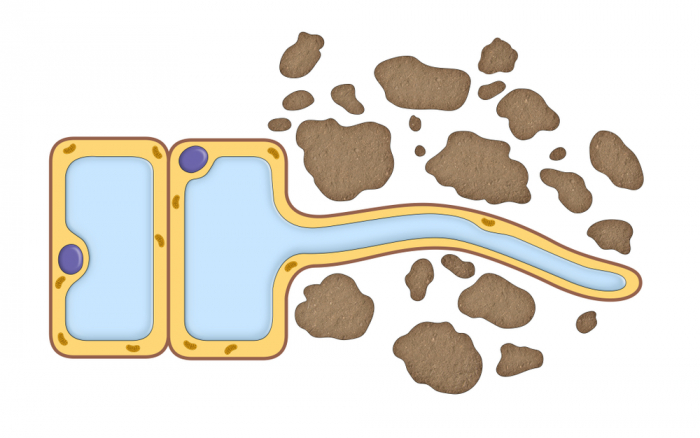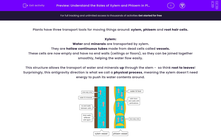Plants have three transport tools for moving things around: xylem, phloem and root hair cells.
Xylem:
Water and minerals are transported by xylem.
They are hollow continuous tubes made from dead cells called vessels.
These cells are now empty and have no end walls (ceilings or floors), so they can be joined together smoothly, helping the water flow easily.
This structure allows the transport of water and minerals up through the stem - so think root to leaves!
Surprisingly, this antigravity direction is what we call a physical process, meaning the xylem doesn’t need energy to push its water contents around.

Phloem:
Phloem moves food around the plant (sugars and amino acids), transporting them up and down to wherever the plant needs them.
Phloem has its own term for this transport called translocation.
But the phloem is actually a combination of two cell types, both of which are alive and depend on each other:
One type is the sieve tube cells which are empty and are stacked on top of each other, with their cytoplasm mixing through gaps in the ends of each cell.
But translocation needs energy, which is provided by companion cells, and every sieve tube gets at least one!

Root Hair Cells:
These allow a plant to absorb water from the soil.
They are long and thin so they can collect water around pieces of soil and they have a larger surface area for better water absorption.
Water travels from where there’s lots in the soil to where there is little in the cytoplasm, but as the root hair cell starts to fill up, to make sure water keeps coming in, the cell pumps salts into its cytoplasm to draw more water in.
This movement of water is called osmosis, and the forcing of salt is active transport, with the latter needing a lot of energy.
Now let's move on to some questions.








